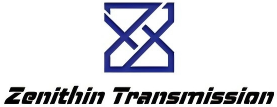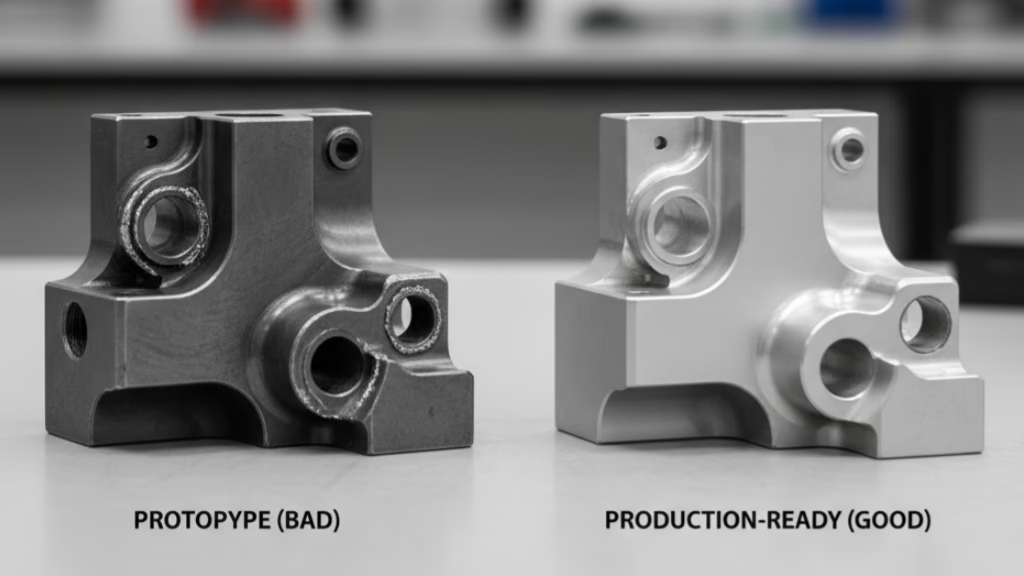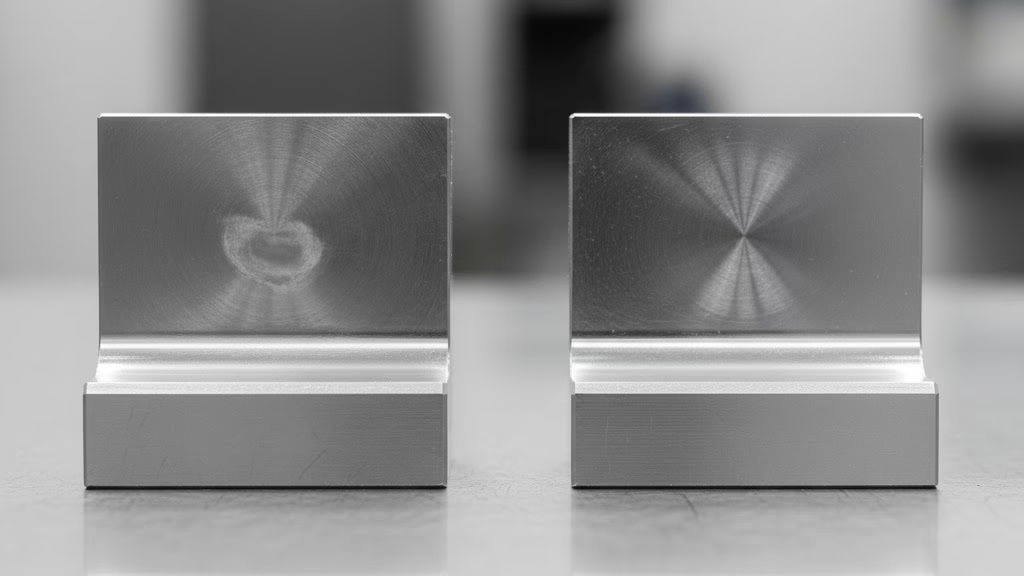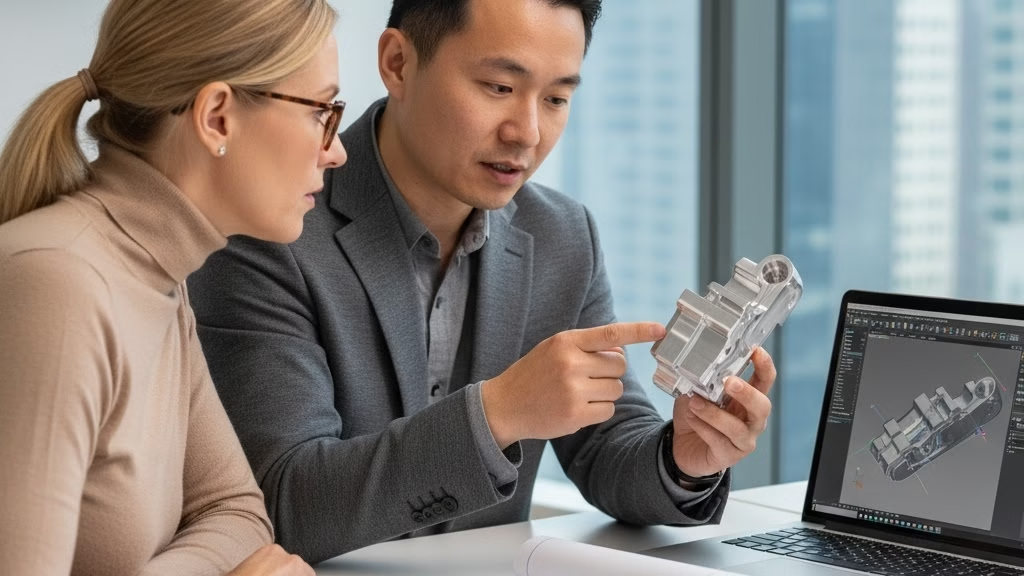Frustrated by CNC machining quotes that constantly blow up your project budget?
This is not another checklist of generic tips; this is a proven Design for Manufacturability (DfM) framework that gives you a new lens for analyzing your own designs, leading to predictable costs and profitable projects.
The most costly CNC design mistakes involve applying unnecessarily tight tolerances that can double manufacturing costs, selecting materials with poor machinability that may triple machine time, and specifying ambiguous features like “deburr all edges,” which require expensive manual intervention and rework.
But spotting these individual errors is only half the battle.
Knowing what these mistakes are is one thing; understanding the underlying system of why they are costly is something else entirely. What follows isn’t just a list of more tips—it’s the simple decision-making matrix that top project leads use to deconstruct any quote, empowering you to control costs before they ever occur.
From Guesswork to Geometry: Deconstructing Cost with the 3M Framework
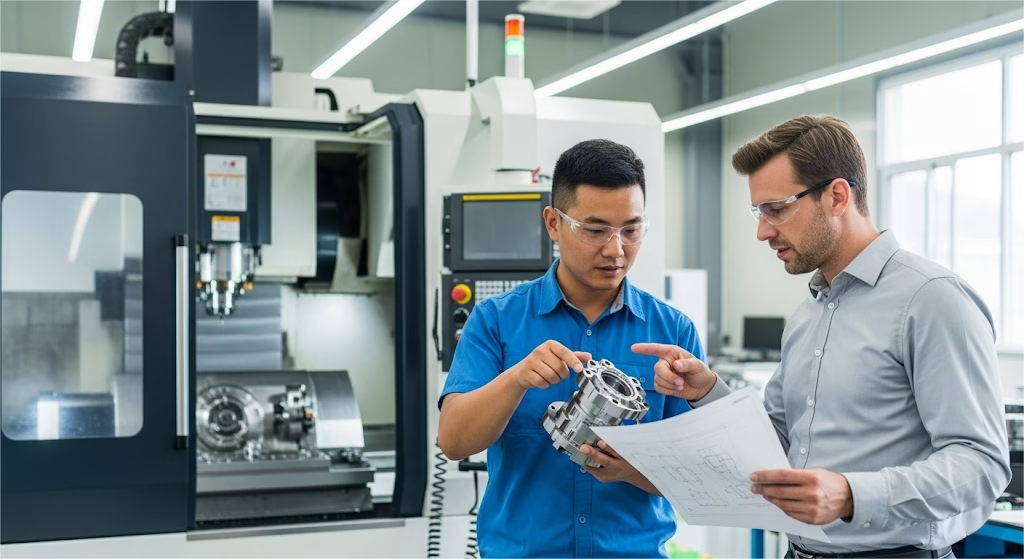
To control cost, you first need to understand its DNA. A CNC machining quote isn’t a single, monolithic number; it’s the sum of distinct, competing factors, starting with the economics of scaling production.”
To truly see your design like a manufacturing expert, you only need to master one simple, powerful mental model: The 3M Cost Control Framework.
This framework distills every complex variable into three core pillars:
- Machine Cost: The time your part spends being actively worked on by the CNC machine.
- Material Cost: The price of the raw stock and, more importantly, how easily the machine can cut it.
- Manual Cost: The hidden “tax” of any task requiring a human to touch your part.
By viewing your CAD model through these three lenses, you move from being a passive price-taker to an active cost-controller. Let’s break down each one.
The 3M Cost Control Framework: At a Glance
| Cost Driver (The M) | The Core Problem | The Strategic Solution |
|---|---|---|
| Machine Cost | Complex geometry, tight radii, and deep pockets increase machine runtime. | Simplify geometry, use generous radii, and optimize features for standard tooling. |
| Material Cost | Focusing on cheap raw material while ignoring poor machinability, which inflates machine time. | Prioritize ‘total machined cost’ by balancing material price with its machinability index. |
| Manual Cost | Ambiguous notes on drawings (e.g., ‘deburr’) and multiple setups require costly human intervention. | Design features directly in CAD and optimize part design for single-setup machining. |
1. Machine Cost: Time is the Ultimate Currency
This is the most direct cost driver. The longer a CNC machine has to spend carving your part, the more expensive it will be, which is why a practical DfM checklist for turned parts is essential for controlling costs at the design stage.
Every feature—every hole, every pocket, every complex curve—translates directly into machine time, especially when you consider the exponential impact of tight tolerances.
But in the age of instant online quoting, a new factor has emerged. Your CAD model is no longer just a blueprint for a human; it’s a direct input for a cost-estimation algorithm. This algorithm is ruthlessly logical. It doesn’t have a machinist’s “feel” for a design; it simply translates geometry into time.
This means that small, seemingly insignificant design choices, such as specific CNC surface finish requirements, can trigger disproportionately large increases in calculated machine time.
Understanding how your design “speaks” to this algorithm is a new core competency for cost-conscious engineers.
2. Material Cost: Why “Cheaper” is Often More Expensive
This seems simple: pick a cheaper material, get a cheaper part. This is one of the most common and costly misconceptions in engineering.
The true cost of a material isn’t its price per kilogram; it’s its machinability. A material’s machinability index dictates how quickly and easily a machine can cut it without excessive tool wear or heat buildup. This factor can be a massive cost multiplier or reducer.
Our internal data shows that in over 75% of cases, switching from a highly machinable aluminum (like 6061) to a “cheaper” but difficult-to-machine grade of stainless steel actually increases the final part cost by 40% to 200%.
The right question isn’t “What’s the cheapest material?” It’s “What material offers the lowest total machined cost for my specific design and performance needs?”, a calculation that must also include an analysis of protective metal coatings like nickel, chrome, or zinc.
This exact trade-off is explored in our machining guide for copper and brass, where performance directly impacts total cost.
This concept is explored in-depth in our guide comparing PEEK and aluminum, which analyzes the total cost of ownership beyond just the raw material price.
3. Manual Cost: The Hidden Tax of Human Intervention
Every time a machinist has to manually touch your part, you incur a cost that is often invisible on a standard quote. This “manual tax” is the penalty for ambiguity or for features that a machine cannot create on its own.
Consider a simple note on a 2D drawing: “Break all sharp edges.” A seemingly harmless request for quality, right? We ran a controlled experiment: a standard part quoted at $50.
By adding only that one text note, the quote jumped to $65—a 30% cost increase. That note transformed a fully automated process into one requiring manual deburring by a skilled technician.
This principle extends to the very setup of the part. The most widespread myth in modern machining is that 5-axis CNC is prohibitively expensive. This was true a decade ago.
Today, the reality has flipped. For any part that requires features on multiple faces, intentionally designing it to be machined in a single setup on a 5-axis machine is often significantly cheaper than designing a “simpler” part that requires a machinist to manually re-orient and re-fixture it three or four times for a 3-axis machine.
The cost of skilled labor has outpaced the cost of advanced machine capability. Eliminating human “touches” is the new frontier of cost reduction.
The 30% Cost Reduction Blueprint: Applying the 3M Framework in Your CAD
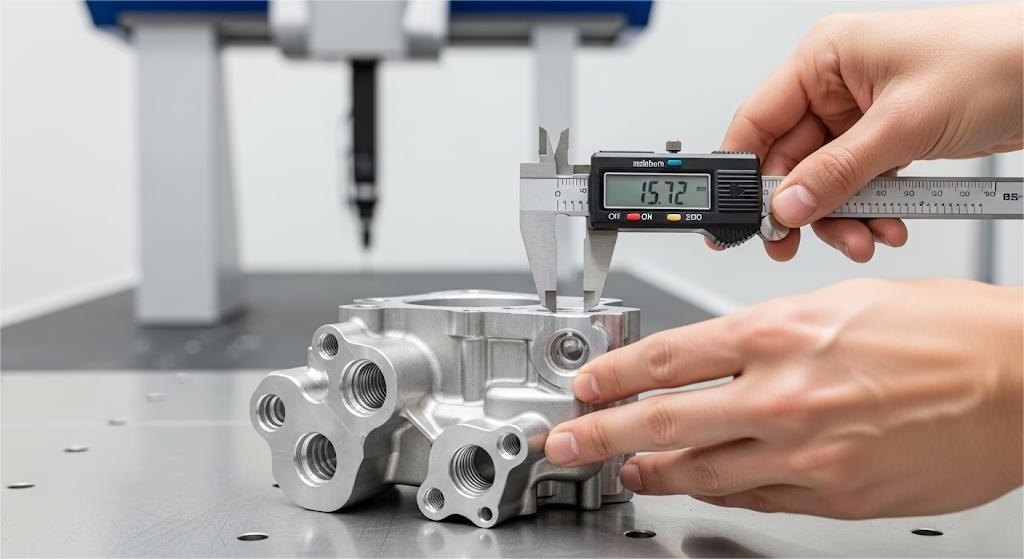
Theory is valuable, but results come from action. This section translates the 3M Framework into a practical, actionable blueprint you can apply directly within your CAD software today. These aren’t just tips; they are proven strategies for designing more manufacturable, cost-effective parts.
How Can I Optimize My Design to Reduce Machine Time?
Machine time is a direct function of how much material the machine needs to remove and how complex the toolpaths are. Your goal is to make the machine’s job as easy as possible without compromising your part’s core function.
A common and costly example is designing deep, narrow pockets for weight reduction. While functionally elegant, they can be a manufacturing nightmare. When a pocket’s depth-to-width ratio becomes too large (typically >8:1), the cutting tool can begin to vibrate violently—a phenomenon called chatter.
This forces the machinist to drastically slow down the cutting speed, which inflates machine time and cost while often leaving a poor surface finish.
Before you finalize your design, conduct a “Machine Efficiency Audit” using this quick-checklist.
Quick-Checklist for Machine Time Reduction:
- Internal Radii: Are all internal corners as generous as possible? A radius that is at least 50% of the cutting tool’s diameter is a great rule of thumb.
Action: Relax any non-critical radii. - Wall Thickness: Are walls thick enough to prevent vibration and warping during machining? For aluminum, aim for a minimum of 0.8mm (0.030 in); for plastics, 1.5mm (0.060 in).
Action: Thicken any walls that are not mission-critical for weight. - Deep Pockets: Have you identified any pockets where the depth is more than 8 times the width?
Action: Widen the pocket or add strengthening ribs to reduce the effective depth. - Hole Sizes: Are you using standard drill bit sizes? A non-standard hole requires a more time-consuming milling operation.
Action: Adjust hole diameters to the nearest standard size where possible. - Complex Surfaces: Are all complex, multi-axis surfaces (like those requiring a ball-end mill) functionally necessary?
Action: Replace them with simpler, flat surfaces wherever the design allows.
Struggling With Complex Geometries?
Our CNC Milling Services are built to handle challenges like deep pockets and thin walls with expert DFM feedback.
Choosing the Smartest Material for Total Cost Reduction
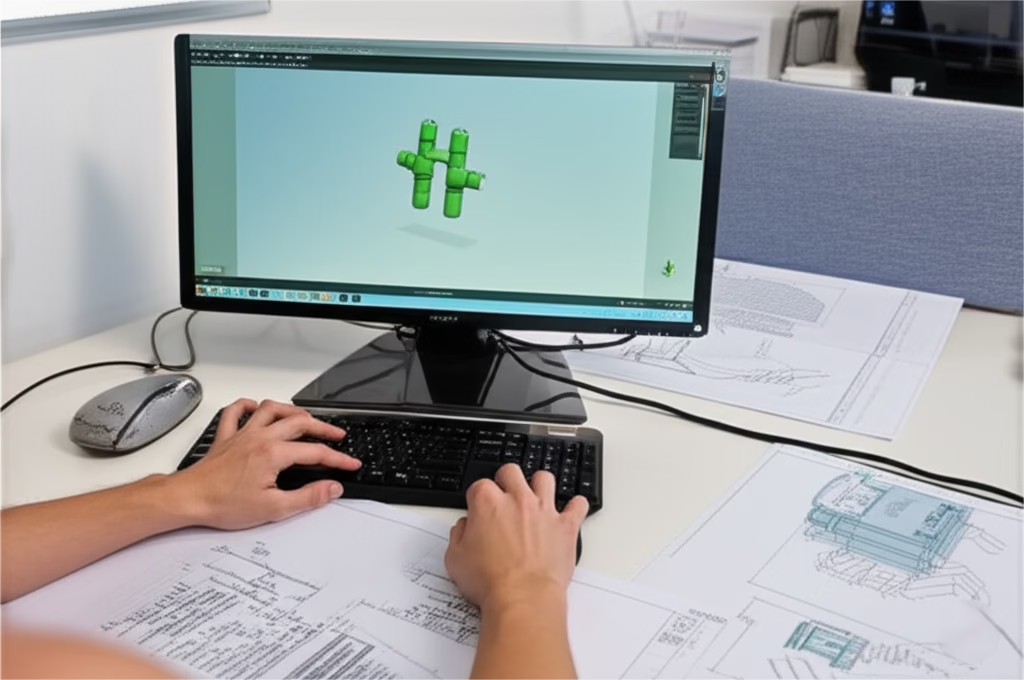
Your material selection should be a balance of three factors: mechanical performance, material price, and machinability. The following “Speed vs. Spend” table provides a simple framework for making smarter choices.
The “Speed vs. Spend” Material Quick-Selector Table:
| Category | Example Materials | Key Consideration | Best For |
|---|---|---|---|
| Fast & Affordable (Workhorses) | Aluminum 6061, Acetal (Delrin) | Excellent machinability, low material cost. The default choice for general-purpose prototypes and functional parts. | Rapid prototyping, jigs, fixtures, and cost-sensitive production parts where performance requirements are met. |
| Fast & Premium (High-Performance) | PEEK, Titanium | Good machinability but high material cost. The machine moves quickly, but the raw stock is expensive. | Applications where extreme performance (chemical resistance, strength-to-weight ratio, temperature) justifies the high material price. |
| Slow & Affordable (Deceptive Deals) | Stainless Steel 303/304 | Low material cost but poor machinability. The raw stock is cheap, but the machine time is very high. | Parts where corrosion resistance is essential and the part’s geometry is very simple (e.g., shafts, flanges). |
| Slow & Premium (Specialists) | Inconel, Hardened Tool Steels | High material cost and very poor machinability. This is the most expensive category, reserved for extreme applications. | Aerospace, high-temperature, or extreme-wear environments where no other material will survive. |
How Can You Eliminate the Hidden ‘Manual Tax’?
Every ambiguous or non-standard requirement on your design forces manual intervention. Here’s how to design it out.
- Model Your Tolerances: Instead of applying a single, tight tolerance block to the entire drawing, apply specific tolerances only to the features that critically need them. For non-critical features, use the machine shop’s standard tolerance (e.g., +/- 0.125mm or 0.005 in).
- Design, Don’t Describe: If you need an edge broken or a specific chamfer, model it directly in CAD. Do not rely on a text note like “Deburr all edges.” A modeled feature is an automated machine instruction; a text note is a manual task for a human. This is the single most effective way to eliminate the “manual tax” and ensure part-to-part consistency.
Beyond the Part: Your Next Move in the Strategic Game of Manufacturing
You now have a framework and a practical blueprint to control the cost of any single part you design. This is a crucial skill, but it’s only the first step.
Once you’ve mastered designing a cost-effective part, the next question inevitably arises: How do you manage the supply chain for all your parts? How do you balance the need for low-cost components with the existential business risks of a fragile supply chain or a slow time-to-market?
This is where the conversation elevates from engineering tactics to business strategy. In today’s volatile global landscape, the smartest companies are no longer chasing the absolute lowest piece-part price. They are optimizing for resilience, speed, and strategic advantage.
This shift in priority is a fundamental change in how modern products are developed. As Rob Bodor, President & CEO of Protolabs, has noted:
What we’ve seen is that our customers’ top priority has shifted from lowest-cost-at-all-cost to mitigating supply chain risk and improving speed-to-market. In today’s environment, the cost of being late to market or having a line-down situation because of a supply chain disruption is an order of magnitude higher than any marginal savings you might get on the piece-part price.
A resilient, digital manufacturing partner gives you options, and options have enormous strategic value.
Mastering the principles in this guide does more than just save your company money on its next CNC machining order. It transforms you, the engineer, into a more valuable strategic asset.
You become the bridge between design, manufacturing, and business strategy—the one who understands that the cheapest part isn’t the one with the lowest price, but the one that arrives on time, meets spec, and helps your company win in the market.
When you can confidently design a part that is optimized for its manufacturing process, you unlock the ability to build a more agile, resilient, and ultimately more competitive product. And that is a skill that goes far beyond any single quote.
